As more people embrace outdoor recreational activities during the pandemic, textiles and fabric products are in high demand.
by Pamela Mills-Senn
After months spent hunkered down at home because of the pandemic, people have become restive. They want to participate in life again, yet still follow social distancing guidelines. As a result, many people have begun to embrace outdoor recreation opportunities such as RVing, camping and glamping, and some people are even taking to the skies. Here’s a look at several outdoor recreation manufacturers whose businesses are experiencing a shot of adrenaline during the pandemic.
Hitting the road
Canvas Replacements has been providing replacement tent assemblies for older camping trailers and RVs since 1977. At first, the Loyal, Wis.-based company worked with manufacturers of camping trailer tents for its supply of tents, says Bob Grambsch, president and cofounder. But eventually, in order to provide products for more camping trailers, the company opened its own sewing room to create tents. Since then, Canvas Replacements has added products such as canopies and awnings for RVs and other items.
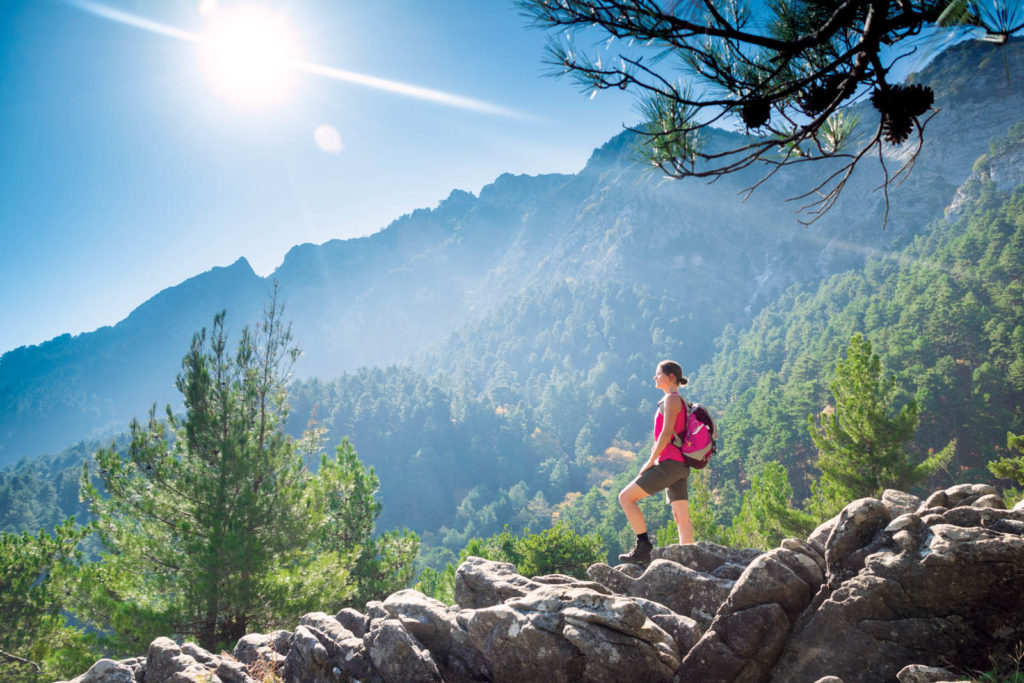
Customers include RV dealers, service businesses and a few internet stores, along with marine canvas, awning and upholstery sewing shops. Canvas Replacements also sells to individual RV/camper trailer owners nationally and internationally.
Fabrics such as cotton marine-treated ducks, poly-cotton ducks and vinyl-coated polyesters must be flame-retardant to FMVSS302 standards, says Grambsch, while the vinyls and duck fabrics must be waterproof or at least highly water repellant. Sunforger® ducks, ABC bunk end vinyls, Bruin Camper-Tex™, Sunbrella® 302 and Sunbrella awning fabric comprise some of the trade products the company uses.
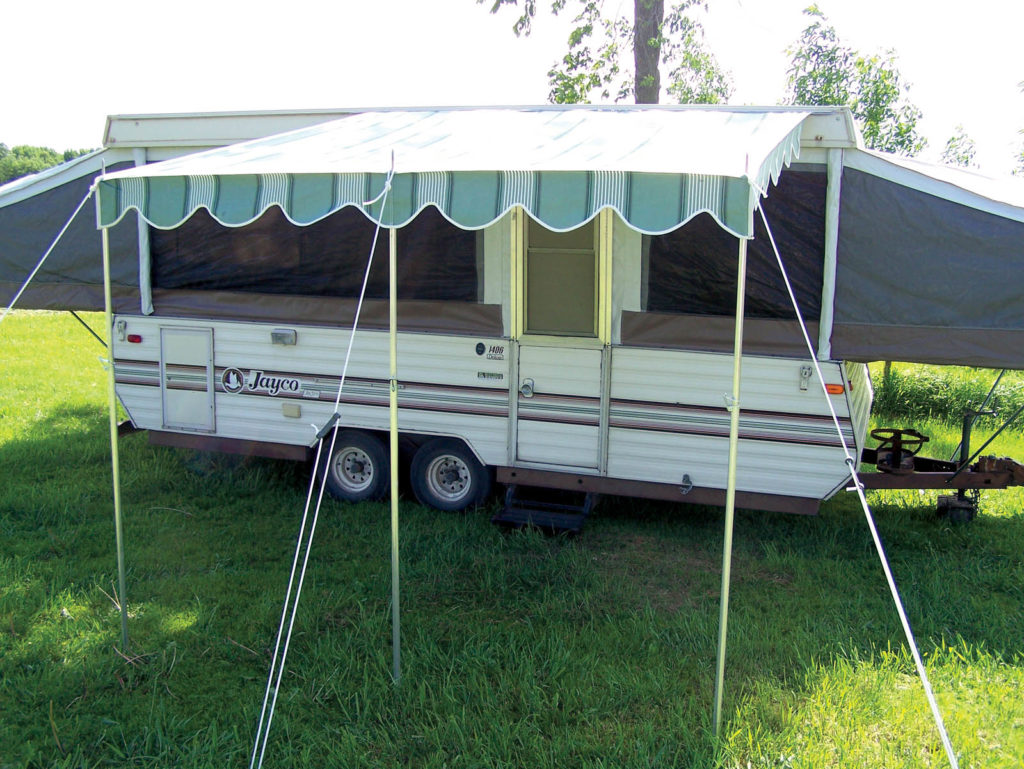
Business is typically slow from October through January, with sales picking up in February. This year was pretty normal—until March 25, when the sewing room closed through May 1 because of the shutdown. Still, orders came in at the normal rate, says Grambsch. During that time Canvas Replacements was able to ship stock and fill small orders daily. Even so, total sales through the end of May dropped 21 percent for the year, with sales for April and May down 26 percent. But in June, the picture brightened.
“Sales were up this year by 28 percent, almost making up the difference,” says Grambsch. “All summer our biggest problem has been keeping up with demand. Hundreds are refurbishing the ol’ pop-up and going camping. Sales of new RVs had the best July in decades. Our sales will probably stay up for the foreseeable future.”
The company’s biggest challenge now is finding skilled, trainable workers. This is especially imperative since, thanks to the pandemic inspiring more RV use, Grambsch believes the outdoor recreation market will only grow, saying that he’s sensing a lot of optimism from those in his RV industry network.
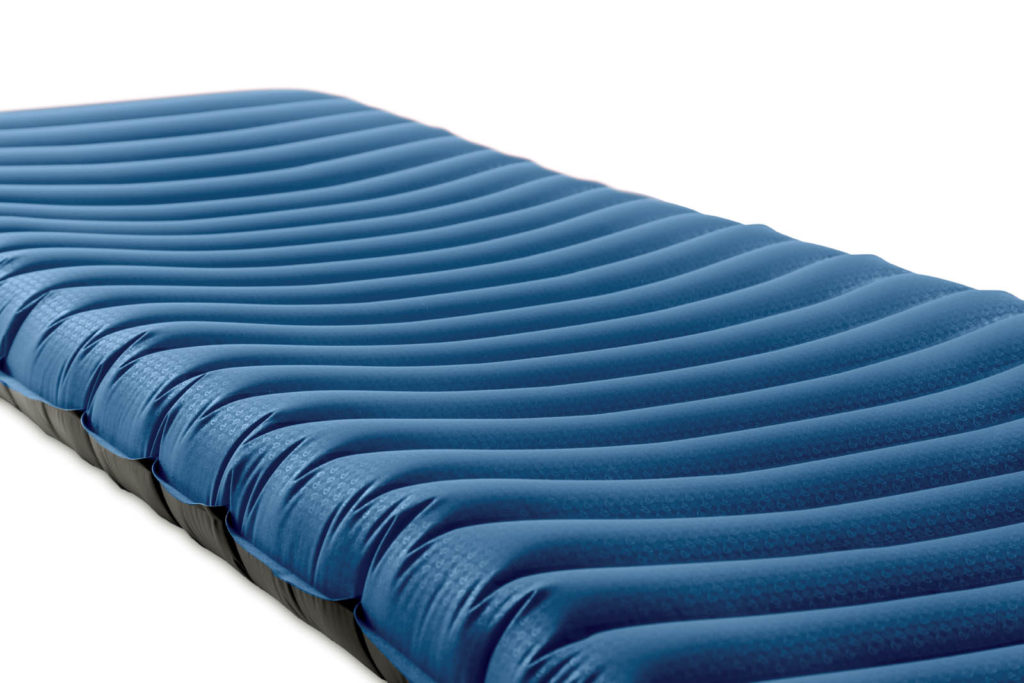
Gearing up
Contrary to what many businesses experienced during the COVID-19 shutdown, demand for NEMO Equipment Inc.’s products “skyrocketed,” requiring it to triple production, says Noah Pitchforth, vice president of product for the Dover, N.H., manufacturer of outdoor gear.
More people are heading outdoors, Pitchforth explains, perceiving this as
a safer place to gather while still staying socially distanced. As such, he says, trail usage and national park visitations are “up across the board.”
NEMO offers tents, sleeping bags and pads, furniture and camping accessories. The wholesale brand sells to outdoor specialty retailers and directly to individual users. Products include its fully waterproof backpacking tents ranging from 7-to 68-denier yarns with fabric coatings of either polyurethane or a silicone/polyurethane mixture.
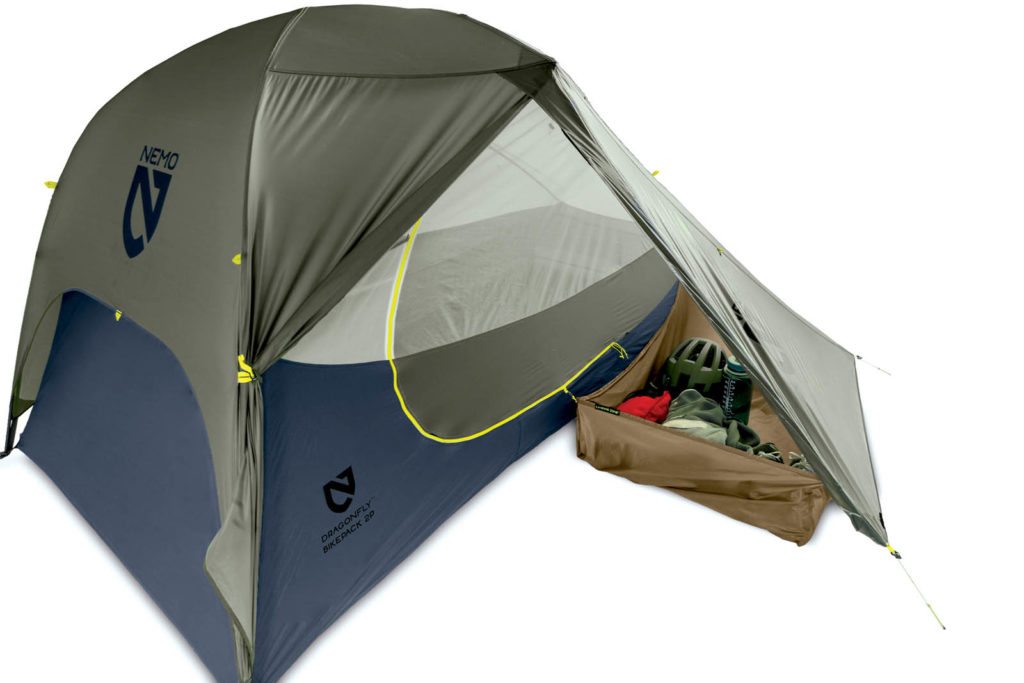
NEMO sleeping bags combine lightweight 20- and 30-denier polyester and nylon fabrics. Ripstops with a Ciré finish for durability comprise the shell fabrics with a waterproof/breathable fabric at the head and foot of the down bags to ward off condensation.
“Our liner fabrics are selected for their soft buttery hand feel, typically found with taffeta weaves,” says Pitchforth. “And across the line we are pushing as hard as we can for 100 percent postconsumer recycled and bluesign® materials.”
Two new items he’s excited about include the Aurora™ and Dragonfly™ bikepack tents made with fabrics that meet CGSB-182.1 requirements without using added chemicals for flame resistance, resulting in a cleaner product that doesn’t compromise performance.
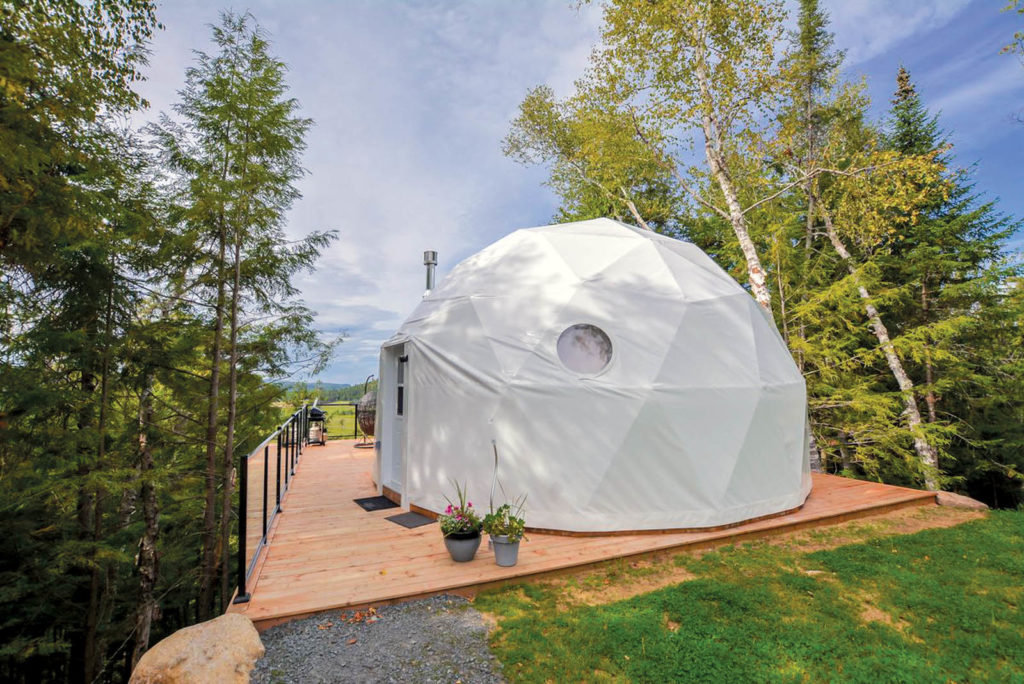
Then there’s the Quasar™ 3D series sleeping pads. Poised to launch in spring 2021, the 30-denier ripstop pads balance weight and strength with a soft hand. Additionally, the polyester yarns are 100 percent recycled with bluesign-certified dyeing process.
Pitchforth says along with durability and dependability, the company and its customers value recycled options, water repellency, water resistance, abrasion resistance, colorfastness, flame resistance and tear strength.
“For 2022, we’re adding a focus on water absorption, fabric stretch, tensile strength and changing the way we evaluate water repellency and coating degradation,” Pitchforth says. “And we’re quickly planning for our forecasts to be up across the line in 2021 and negotiating added capacity options.
“We believe demand for outdoor gear will continue growing as families discover and rediscover the rejuvenation, peace and challenge that adventuring outdoors can bring,” he continues. “With more folks going outside, there will be steady demand for intuitive, accessible and sustainable products that enable these experiences.”
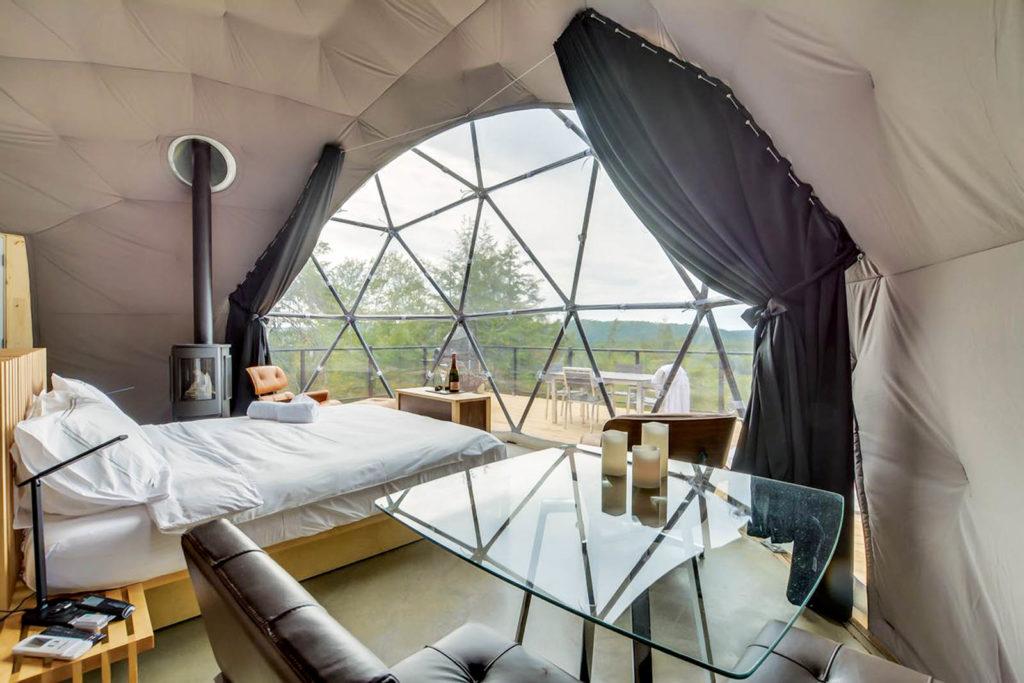
Escaping in comfort
For people preferring their outdoor getaways with a few creature comforts, yurts and domes offer a good solution, allowing people to enjoy the feeling of being close to nature without having to wallow in it. At the same time, these structures appeal to those seeking to live a more sustainable and downsized lifestyle, says Nathan Toler, owner of Ohana Yurts. Located in Waialua, Hawaii, the company designs and produces custom yurts, ranging from 12- to 30-foot sizes with walls of varying heights, some of which allow for lofts or a second story.
Since the company specializes in tropical yurts, all have acrylic fabric walls to aid in cooling and prevent mold/mildew. Waterproof and breathable textiles that can withstand the sun are “first and foremost” on the list, along with recycled/eco-friendly materials, says Toler, adding that the company is “on the lookout” for hemp and solar fabrics.
Ohana customers are mainly folks who want to “live off the grid,” although several area hotels have also expressed interest, Toler says, adding he’s hesitant about selling to this market. However, Ohana is currently building “glamp-grounds” that it intends to own, operate and eventually franchise.
While the pandemic hasn’t slowed down orders, it has made sourcing more difficult. Manufacturing in Hawaii is typically challenging since textile providers are fewer in number than on the mainland, says Toler. But now, the pandemic has exacerbated the usual supply issues, particularly of acrylic, which is being diverted into personal protective equipment (PPE) production and other uses.
“Luckily, we live in Hawaii, where sometimes deadline isn’t really a deadline,” says Toler, referring to “aloha time.”
In Ashland, Ore., the pandemic has had a “dramatic” effect on business, says Taylor Lore, an account executive for Pacific Domes Inc., a membrane structure company focused on geodesic domes. The company pursues three primary markets: events (tradeshow domes, giant outdoor festival domes, projection/experience spaces and product launches) followed by dwellings (glamping resorts or individuals) and greenhouses (educational institutions or commercial greenhouses).
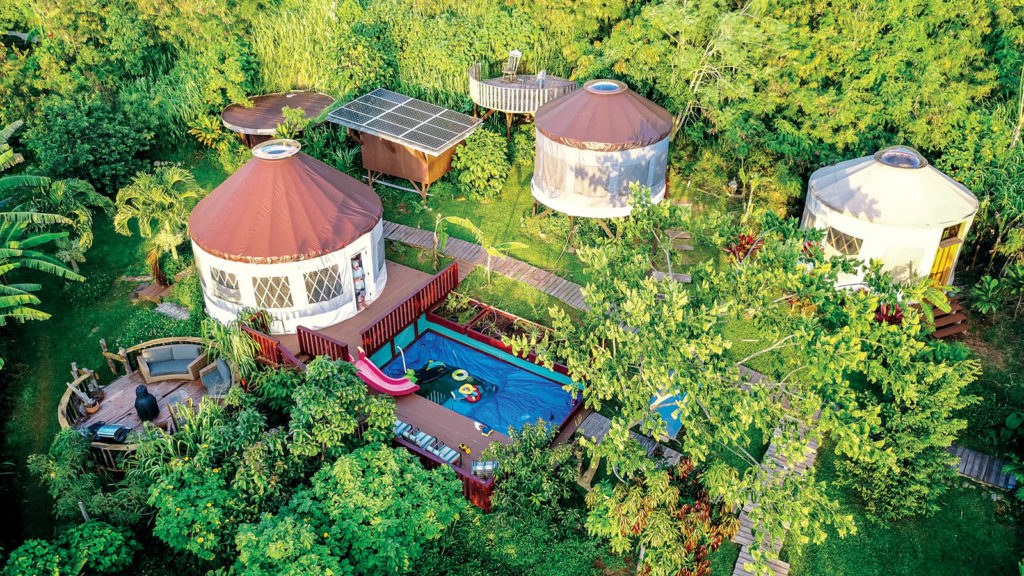
Domes offer significant advantages, requiring the least amount of raw materials to cover the largest amount of physical space, says Lore.
“The domes’ portability, minimal infrastructure requirement and durability enable them to be utilized in any situation, including those where traditional buildings cannot,” he says, adding that domes are immune to seismic effects as well.
The revenue drop in the company’s event business was significant, although demand hasn’t totally vanished, with people expressing interest in the domes to facilitate social distancing at events and restaurants. Fortunately, there’s been a “large bounce” of interest in dwelling and greenhouse domes. People are seeking to get farther away into the country and practice a more isolated and self-reliant way of life, Lore explains. But the greatest attention is coming from those interested in creating glamping resorts rather than private residences—something Lore says is uncharacteristic.
The dwell domes’ exteriors utilize Soltis® Proof 502 vinyl. There are two liner options—a light liner made from a single layer of Oxford nylon that hides the steel frame, or an insulated liner of 3M™ Thinsulate™ sandwiched between two layers of Oxford nylon, providing an R3 insulation value. Greenhouse domes feature a skin of Herculite® agricultural vinyl, allowing for a high level of light transmission without burning the plants.
One issue Pacific Domes struggled with was working remotely, says Lore, explaining it was not prepared for its entire office staff to work from home.
“This cost us the entire month of March in terms of productive time,” he says. “But this was the peak of pandemic-related fear so I imagine we would not have been very busy anyway. We’re still concerned a second lockdown may be in the near future, and while we’re now properly equipped for such an event, it’s likely we’d see a similar drop in productivity should that occur.”
Pamela Mills-Senn is a Seal Beach, Calif.-based writer.
SIDEBAR: Up and Away

Taking to the skies via parachuting, parasailing and hot-air ballooning is how some intrepid spirits prefer to fly. Such airborne adventuring seems especially ideal in this era of social distancing. But like everything else, COVID-19 has left its mark.
Consider Performance Textiles/Ocean State Innovations. Headquartered in Portsmouth, R.I., the company is one of the largest fabric suppliers to the skydiving community. On the commercial side, the company’s nylon fabrics are sold to parachute manufacturers who in turn sell to schools, individuals and teams, and drop zones. Made in various constructions from ripstops to twills and ranging in denier size from 30 to 1,000, the fabrics are also used for hot-air balloons, hammocks, tents and other lightweight recreational items.
Prior to the pandemic, demand for its parachute fabrics from the military and nonmilitary/commercial sectors was strong, says David Mackney, vice president. But it’s different now.
“Many of our customers stopped making parachutes and began PPE manufacturing,” says Mackney. “Some government contracts have been pushed out due to the pandemic and many of the commercial parachute manufacturers needed to adjust their workforces because of COVID-19 state restrictions and the decline in demand that came with it.”
The picture is improving for Free Flight Enterprises Inc., a Lake Elsinore, Calif.-based manufacturer of parachutes for airplanes, pilots and the hang gliding and paragliding sports, says Abraham Villanueva, vice president. The company also does contract sewing for the aviation and aerospace industries and serves customers in non-parachute industries who use Free Flight’s specialized production facility.
Their parachute fabrics—including cloth, fabric tapes, webbing and threads—must be manufactured and certified to mil-spec or PIA (Parachute Industry Association) specifications.
“The canopy of a parachute system requires a low-permeability nylon fabric,” explains Villanueva. “Other fabrics include tapes and webbing of nylon and/or para-aramid materials, and cordage of nylon, Vectran™ and/or Spectra®.”
Before the pandemic, sales met expectations, says Villanueva. However, these declined during the second quarter, although demand for aircraft parachute-recovery systems didn’t slow. Now, they’re on the upswing.
“People want to get back to their normal life and a love for aviation and sports is part of that,” he says. “We have been very busy with increased orders and playing catchup from the lockdown.”
One challenge specific to parachute fabrics is that much production has gone overseas. These manufacturers are unable to meet the required specification, thus limiting their supplier resources, says Villanueva. Still, he remains optimistic about the future. Mackney’s outlook is more guarded.
“The biggest challenge is predicting a forecast for next month, next quarter and next year,” he says. “When will things be back to normal? Will things get back to normal? There are optimistic signs in other non-recreational segments so the hope is that increased demand will translate to the recreational demand following suit.”
 TEXTILES.ORG
TEXTILES.ORG


